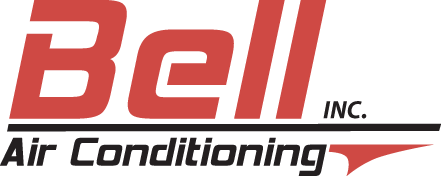
A furnace is almost always a background player for your home, ensuring you're warm during the cold winter months. It frequently isn't noticed until something breaks down.
One source could be that your furnace has a cracked heat exchanger. It can be a safety risk, so it’s critical to know the symptoms of a cracked heat exchanger and what you can do if you suspect that is the problem.
What Is a Heat Exchanger in a Furnace?
A heat exchanger transfers heat from the combustion chamber inside your furnace to the air that flows through the air ducts. It usually handles this using coils or tubes that heat the air while serving as a barrier to keep byproducts created in the combustion chamber, called flue gasses, from leaking out into your home.
Is a Cracked Heat Exchanger Dangerous?
Because of its important role, it’s no surprise that a broken heat exchanger can pose a risk. A damaged heat exchanger can enable dangerous gasses – such as carbon monoxide, which can be lethal – to circulate across your home.
For this reason, never use your furnace if you think you're dealing with a cracked heat exchanger, as this could make the entire family ill. Reach out to an HVAC professional immediately if you are worried your heater has a cracked heat exchanger that needs repair.
Four Warning Signs of a Cracked Heat Exchanger:
- Furnace switches off: Cracks in the heat exchanger could cause your furnace to shut off.
- Unusual Smells: If the air escaping your furnace has a powerful chemical smell, it could be evidence gas is leaking through cracks in your heat exchanger. These byproducts, which will often smell like formaldehyde, are a major warning sign.
- Carbon monoxide alarm initiates or you recognize symptoms of poisoning: If a cracked heat exchanger is emitting carbon monoxide into your home, your carbon monoxide alarm should go off or household members might struggle with signs of carbon monoxide poisoning. Side effects include headaches, dizziness, weakness, nausea, vomiting or feeling tired. If the alarm goes off or you feel unwell, get out of the home as soon as you can and then call for help.
- Soot: If you find black sooty buildup around the exterior of your furnace, it’s more evidence something might be seriously wrong.
What You Should Do if the Furnace Heat Exchanger is Cracked
If you worry your furnace has a cracked heat exchanger, call a professional with extensive experience in furnace installation Temple/Belton right away so they can take a look at your system and, if needed, perform a furnace heat exchanger replacement. Costs will vary depending on the situation, but estimates often hover around $1,000 to $3,000.
However, the good news is that heat exchangers are often covered by the warranty. It's a good idea to review the warranty paperwork on your furnace, because while the warranty might not cover the entire cost of repairs, it can significantly shrink your bill.
How to Avoid a Cracked Heat Exchanger in Your Home
One of the easiest ways to prevent a problem in your furnace overall is via consistent furnace maintenance. Furnaces provide the best possible return on investment when they operate efficiently. Contacting a trained professional to inspect your furnace for broken-down parts, clogged filters and other likely problems can keep you from getting a big bill later on.
It’s also a good idea to review your furnace filters every few months – it’s ideal some filters be replaced every 90 days or sooner if they are dirty or grimy. While the filters aren't a part of the heat exchanger itself, the strain of drawing air through a clogged filter makes your entire furnace work longer to complete its job. And the harder your furnace has to work, the more wear and tear parts like the heat exchanger will endure.
